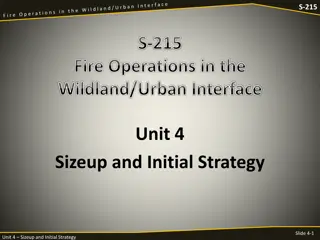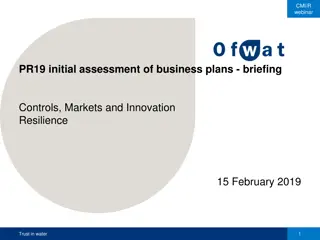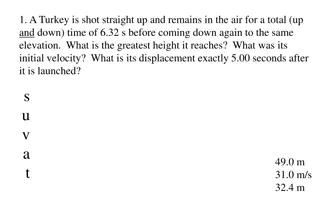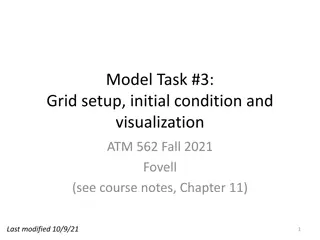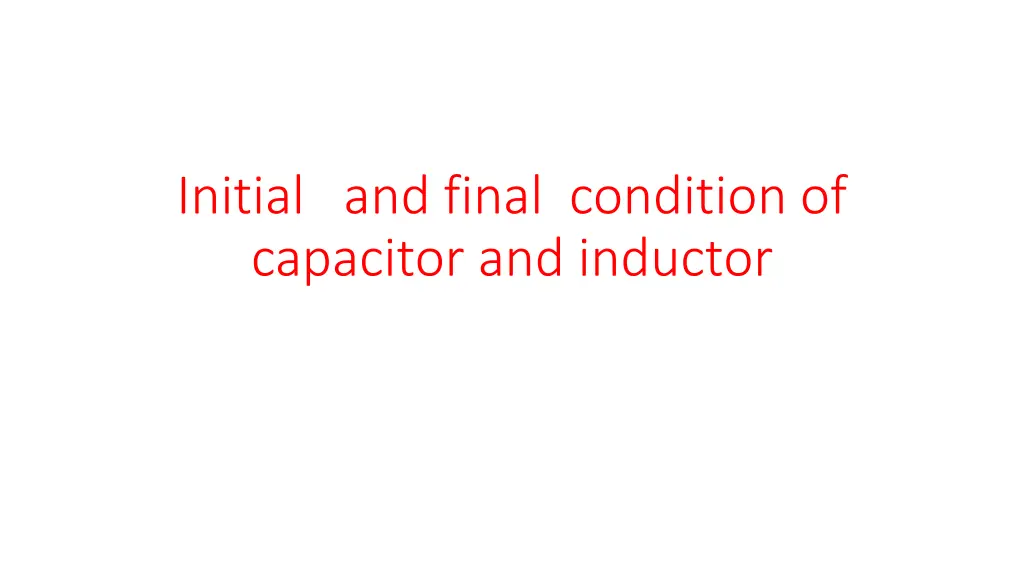
Understanding Initial and Final Conditions of Capacitor and Inductor in Electric Networks
Explore the significance of studying initial conditions in differential equations for electric networks and how they help determine the values of arbitrary constants. Learn about the behaviors of uncharged and charged capacitors, as well as unenergized and energized inductors in various scenarios.
Download Presentation

Please find below an Image/Link to download the presentation.
The content on the website is provided AS IS for your information and personal use only. It may not be sold, licensed, or shared on other websites without obtaining consent from the author. If you encounter any issues during the download, it is possible that the publisher has removed the file from their server.
You are allowed to download the files provided on this website for personal or commercial use, subject to the condition that they are used lawfully. All files are the property of their respective owners.
The content on the website is provided AS IS for your information and personal use only. It may not be sold, licensed, or shared on other websites without obtaining consent from the author.
E N D
Presentation Transcript
Initial and final condition of capacitor and inductor
Why to study initial condition Differential equations written for a electric network consists arbitrary constant. To find the value of those arbitrary constants initial conditions are necessary.
Initial and final conditions of network t=0- indicates the time just before changing the position of switch t=0+ indicates the time just after changing the position of switch t= indicates the steady state condition i.e. final condition
t=0- - Behaviour of uncharged capacitor at t=0
t=0+ + Behaviour of uncharged capacitor at t=0








